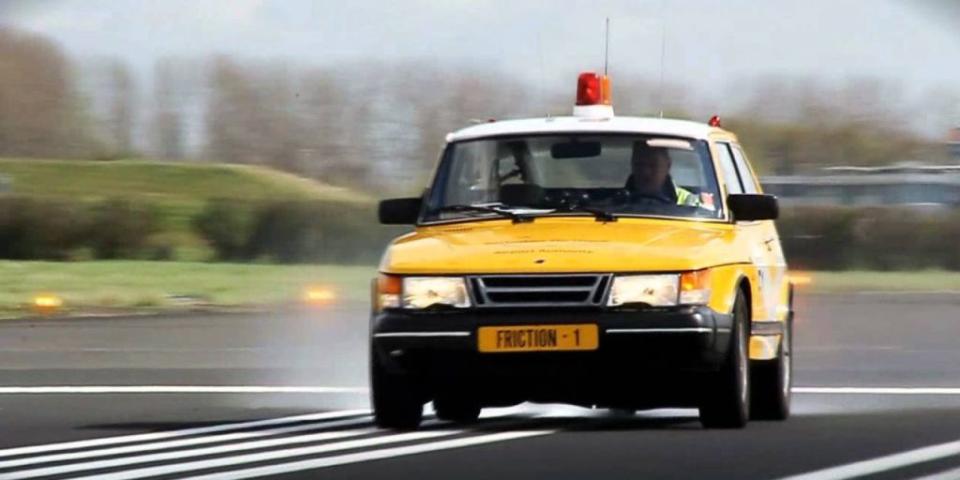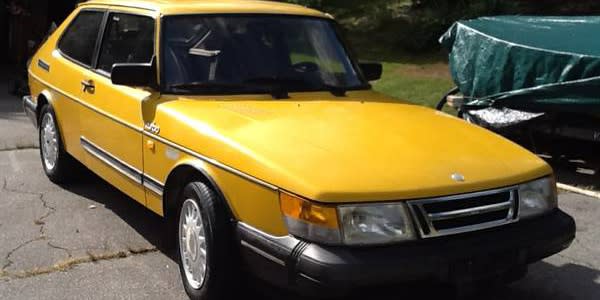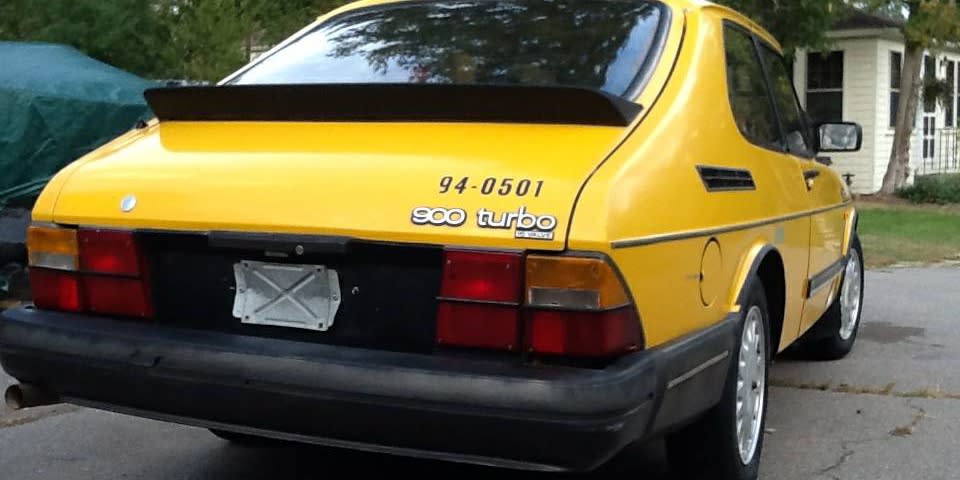A Saab 900 Turbo Friction Tester Keeps Wintry Airports Safe

Your average commercial airliner comes in for a landing at around 160mph. A Boeing 737-800 will take anywhere from 990 to 1030 meters to stop. If the runway is wet, beset by snow or ice, you can add another 100 meters to that figure. Airports use a Friction Tester determines how much room an airplane needs to land on a wet runway: sensors reading a fifth wheel, mounted in a vehicle's trunk, calculate what braking levels are required. This is an especially vital test for airports located in snowy areas, such as Fargo, North Dakota. Given the urgency at wintry airfields, it's no surprise that a Saab makes for a good friction tester.
SARSYS (Scandinavian Airport and Road Systems AB) has been converting Saabs into friction testers since the Seventies. The Saab 9-5 wagon certainly made for a good platform. Computers could calculate in real time friction coefficients, print out data, and transmit it by radio, complete with GPS information for exacting results.

Hector International Airport in Fargo, North Dakota, put this 1987 Saab 900 Turbo to that exact use. Now, it's for sale. Just 19,000 miles on the clock is incredible for a car made in the same year as your humble chronicler, but you can guarantee that those were some hard-driven miles, streaking down snowy runways at quick speeds. (With a top speed of 125mph the 900 Turbo is just shy of an approaching Airbus.) The back seat has been replaced by the Saab Friction Tester, still intact and ready to keep your own wintry airstrip safe and sound.

For just $2,000 and a trek to Boston, where the snow doesn't melt until July, you can own a Saab curiosity that's all but guaranteed maximum visibility-for a good reason.
Images via YouTube, Craigslist

 Yahoo Autos
Yahoo Autos 